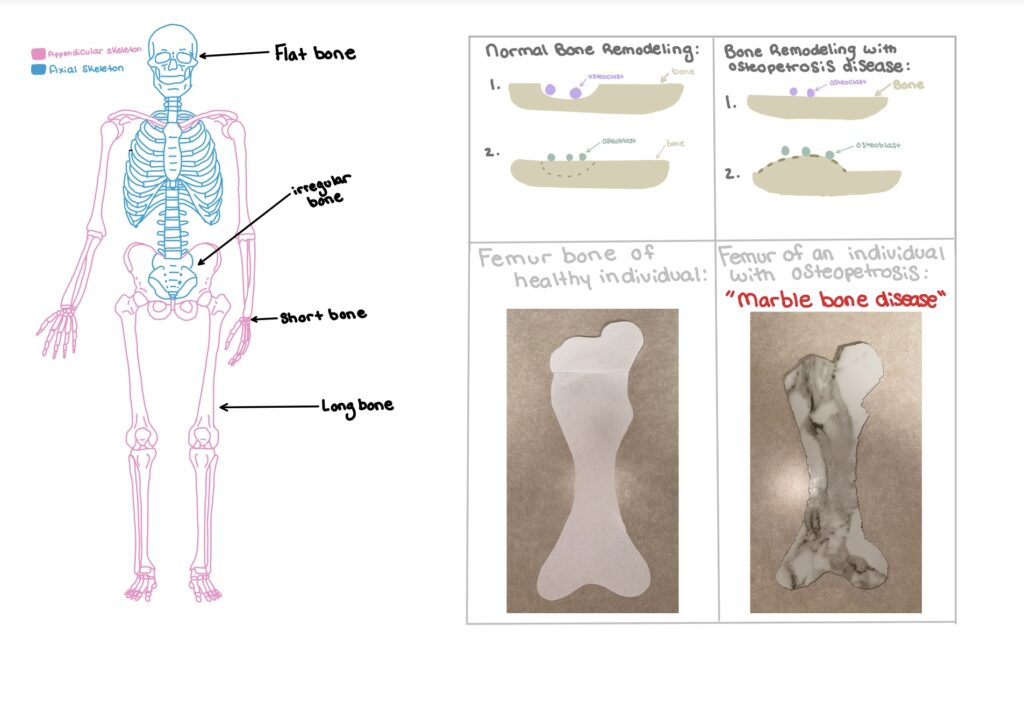Osteopetrosis, “the marble bone disease” affects about 1 in 100,000 to 500,000 individuals each year. Osteopetrosis is a rare disorder that causes bones to grow abnormally and become overly dense. When these bones become overly dense, or “marble-like” they become brittle and can fracture easily. During bone remodeling, the old bone is removed or resorbed by the osteoclast cells, and osteoblasts form new bone. However this process does not work for individuals with osteopetrosis. Instead, the old bone is not removed or resorbed, as the new bone is formed.
**There is suppose to be a video included in this post, but WordPress won’t allow me to upload, so here is the material that was included in the video:

itemprop="discussionURL"One Comment
